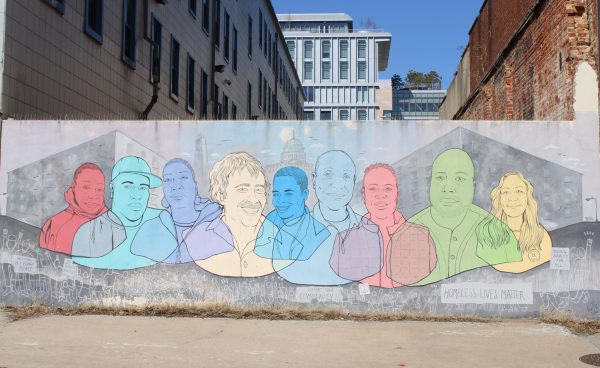Dead man walking
Alan Gell spent six years on death row. At the age of 21, he was convicted of robbery and first-degree murder of a 56-year-old retired trucker, Allen Jenkins. Gell’s girlfriend at the time and her friend gave false testimony at his trial, claiming they saw Gell shoot Jenkins. There was no physical evidence linking him to the murder, only the two testimonies and a faulty date of Jenkin’s death.
Gell appealed his conviction because he believed the prosecution did not give adequate evidence of his innocence. A common belief is that the defense has to provide evidence to prove their client’s innocence, but the prosecution is also obligated to prove the suspect’s innocence. This serves as a protection from the state prosecutor and keeps people from being wrongfully convicted.
According to the Innocence Project, a non-profit organization aiming to exonerate wrongfully convicted individuals, death sentences represent less than one percent of prison sentences in the United States, but they account for 12 percent of all exonerations from 1989 through early 2012.
Most convicts who appeal their death sentences are simply re-sentenced to life in prison.
According to a recent study from the National Academy of Sciences, “Rate of False Conviction of Criminal Defendants Who Are Sentenced to Death,” the majority of innocent defendants convicted of capital murder in the United States are never executed nor exonerated. Instead, they are sentenced to prison for life, and too often, are forgotten.
“Eyewitnesses, false confessions, investigations driven by tunnel visions and sometimes political pressure are the main causes of faulty convictions,” said Robert Johnson, a professor at American University and an expert in the death penalty. “In a way, it’s surprising there aren’t more errors.”
According to Johnson, many prosecutors and police officers feel pressure to solve a case, especially those eligible for capital punishment. This can cause tunnel vision, meaning that investigators can become so convinced that a suspect committed a crime that they don’t see the information that points to the actual perpetrator. This is dangerous because such a narrow perspective often leads to error. The added pressure to win a capital case can sometimes drive prosecutors to withhold evidence proving the suspect’s innocence.
New advances, such as DNA analysis, offer more concrete evidence to convict people other than confessions and eyewitness accounts. But DNA tests typically only exonerate death row convicts if an appeal shows something went wrong during the trial. A controversial death penalty case in Louisiana was retried because during the trial, two prosecutors wore neckties with imagery of nooses and grim reapers. A member from the jury was also found to be biased in his initial interview, saying all murderers deserve lethal injection.
The death penalty is meant to serve as a deterrent, working to prevent people from committing murder for fear of severe punishments. But criminologists have found the opposite.
“States that don’t have the death penalty have lower murder rates than states that do,” said Anne Holsinger, an information and resource specialist at the Death Penalty Information Center. “It is the opposite of what we would expect if the death penalty were to be a deterrent.”
Holsinger says that open file policies, or policies that would make it easier for defense attorneys to see all the evidence in a case, can help prevent prosecutors from withholding evidence. In Gell’s case, prosecutors withheld evidence of six people claiming they saw Jenkins, the victim, days after the reported day of his death.
In two recent exoneration cases, suspects were pressured into false confessions. Policies that allow lawyers to play the tape recording of the interrogation along with the confession can show when investigators become too coercive.
The process of getting a confession can be grueling. Suspects are locked in a room for hours, sometimes without food or water, and are told over and over that they are guilty. Some people can’t take the pressure. They start believing that they actually committed the crime and give a false confession. By hearing the full recording of the interrogation, the jury can decide when investigators cross the line between gaining a true confession and forcing a false confession out of suspects. Although these policy suggestions cannot resolve all the issues leading to wrongful convictions, they can help make the sharing of evidence more transparent.
Gell’s case was re-examined because prosecutors withheld key evidence. Several sightings of Jenkins after the alleged day he died were not brought forward during the trial. New forensic evidence showed that Jenkins’ date of death was actually between April 8 and April 10, not April 3, the prviously estimated date. This proved Gell was innocent because he was out of town on April 8 and April 10.
Gell is one of many exonerates who has spent a good portion of his life on death row. He was exonerated February 18, 2006.
“It dawned on me that what I had lost is gone,” Gell was quoted as saying in “Life After Death Row,” a book by Saundra Westervelt.











